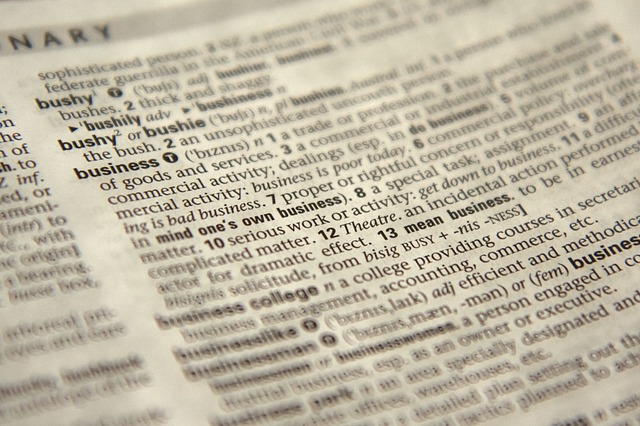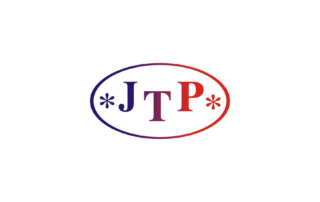Welcome to the news section!
Here you will find all the news related to ATRIL and the translation market.
Glossaries and their role in quality translations
A lot of newbies entering the world of translation believe the translators working with every customer who contacts them. If you, too, think that you can translate any text, you’ll soon realize this is not the case. We live in a world in which specialization is the most important factor and that is why you should choose one field of translation as soon as possible and try to become a master in it. To be able to achieve that, you need to make good use of glossaries.

Glossary, also known as a lexicon or a termbase, refer to a collection of terms and their meanings relating to a specific subject. Deja Vu X3 comes with a number of interesting features that make it easy to keep your glossary up-to-date and well-organized. Make sure you learn all about the Lexicon and Terminology Database!
The market dictates the rules
A number of translators focus primarily on those areas that generate profits. These would be fields like engineering, medicine, translation of contracts or administrative documents. Each of these areas uses specialized vocabulary, and searching for some phrases can mean more than looking them up in the dictionary or the Internet. Sometimes it can take several hours, and in some cases, you may need to ask for help. It may happen that the customer themselves ask us to translate the text in a specific way.
Each sentence can be translated in dozens of possible ways. Although all of the versions you come up with might be correct, only a few will be accepted by the customer. Glossaries make it easier to translate some phrases and stay consistent throughout the document. They provide the translator with suggestions on how to translate a given term or expression. This makes work much easier, smoother and much faster.
Sometimes these hints are incompatible with what the dictionaries say, because the client prefers to use a different phrase. This is a particularly common situation with translations of commercial offers or advertising campaigns. The “customer comes first” principle also seems to apply here. Your client might think that a given term will fit the target group better or sell their product better.
Glossaries mean accuracy
This rules applies especially if you provide technical translation and you want to make sure you use company- or industry-specific terms. In some cases, it might be advisable to consult your client about the glossary, to know you’re both on the same page. That way you’ll avoid confusion and be sure your translations are 100% correct. Having a glossary is also a good idea when collaborating with a team of translators on a project. Having a lexicon of terms is a guarantee that everyone understand the specific notions in the same way and use consistent terminology. Just imagine the horror of having a given word translated differently each time it appears in the document! Another benefit of working with a glossary is speeding up the whole process. Thanks to a clear up-to-date lexicon, you no longer need to think about correct terms and definitions. High chances are it will significantly reduce the time needed to complete the project.
New Year’s resolutions and how to keep them
New beginnings always lead to a reflection on what is old and the decision to improve. Mondays are like a new start, moving in can be a kind of catharsis, because we clean the space and start with a “clean account” in a new place. What about the New Year? This is just an opportunity to start once again! It motivates us and gives us another chance to create a better version of ourselves.
That’s why we make New Year’s Resolutions – we promise to be better, to live healthier, to exercise more, to work harder. Months are passing by and many of these plans are forgotten.
Statistically, most of us stick to our New Year’s Resolutions for about three months. As early as in March we start to break them or even abandon them completely. So, is there anything we can do to make it different this year?

Sticking to your New Year’s Resolutions
-
Be precise but simple
It’s easier to abandon resolutions that are too general, vague or complicated. For instance, you can promise yourself you’ll eat less unhealthily, or spend less time on TV/social media. But exactly how much is “less”? How often can you indulge in grabbing a bite to eat from your fast food restaurant guilt-free? How much TV time would be “too much”? The same principle applies to all kind of resolutions: from improving your skills, taking up a new activity or spending time with your family.
If you want to prevent yourself from making excuses, it’s advisable to make a precise, specific promise, e.g. I will spend 1 hour daily doing xxx. In order to keep track and stay motivated, it’s a good practice to mark all the little successes in a calendar or journal.
-
Tell someone.
Or at least write it down. Keeping your resolutions to ourselves might not be enough. If you share them with a friend, the decisions you make won’t be private anymore. That way, the pressure to live up to the expectations will be higher.
-
Be realistic.
Some of our decisions might be very noble, but sticking to them might be too challenging or simply impossible in the course of the whole year. If you’re planning to “be nice to everyone”, “or never get angry anymore”, your chances of success are rather slim. It’s easy to promise yourself something like that in the spirit of New Year festivities, but there’s no way you can control your emotions all the time to that extent. Don’t promise yourself too much. Generally speaking, it’s better to set yourself a few small goals, instead of just a big one. It’s rather unlikely to “master a new language” within a year, but if you promise to learn bit by bit regularly, you will extend your knowledge by far by the end of the year. It’s also more realistic to stick to just one or two New Year’s Resolutions, instead of trying to do everything at once. Don’t demand too much from yourself at the very beginning, because you’ll be disappointed when you don’t see the effects.
-
Keep track of how it’s going.
You need to know whether you are standing still or if your efforts are bringing results. Try to write down every major step you make towards achieving your goal. By the end of the year you’ll be proud just looking at all the effort you took, and it will motivate you to keep up the good work. You can also think of some clever way to reward yourself each time you meet your goal. Perhaps treat yourself to something you enjoy doing?
-
Motivation is key
You need to know why you’re doing this and what you’re trying to achieve. If you’re finding it hard to stay motivated, look for inspiration. Sometimes the best source of motivation are people who have already achieved what you’re aiming for, or those who are striving for the same thing. Inspiration helps you get excited about your goals. And sometimes all you need is this extra power kick!
-
Don’t get discouraged
Don’t lose hope in moments of weakness. They will come for sure. There will be times when life will get in the way and you might not be able to meet your daily goal. That’s fine, provided it doesn’t happen too often. The important thing is not to forget the big picture. If you’re going to be too strict for yourself, chances are you’ll lose the enthusiasm and commitment. Guilt trips will only waste your time and energy taking you nowhere near your dreams.
Have you made any resolution this year? Perhaps it’s time to think about specialization or increasing your competences as a translator?
THE ABCs of Movie Translation – Subtitling
Movie translation is a kind of translation that probably all language users encounter on a regular basis. It’s hard to think about any other type of translation that would induce such emotions! Just type the phrase ‘worst translated movie titles’ into Google, to get hundreds of articles. It seems that movie translation is something that raises controversy, a thing that everyone has something to say about it. But contrary to a popular belief, translating a film requires really high competences and a lot of work. In order to successfully complete a task, you have to demonstrate many skills, among which language proficiency is not even the most important one.

Movie Translation from country to country
When it comes to movie translation, we can speak of three main categories: dubbing (replacing original dialogues with their counterparts recorded in another language; usually each character in a movie is dubbed by a different actor), subtitles and the so called voice-over (all the dialogues are read by the same narrator). Each of them has its own advantages and downsides. What’s also interesting – some of them are more popular in some specific parts of the world. For example in the whole of Scandinavia, the Netherlands, the UK and most of Asia subtitles seem to be prevalent. In some countries of the former communist bloc, foreign films usually come with voice-over translation, while countries like Germany, France, Spain or Italy usually stick to dubbing. This map illustrates the preferred techniques in different countries:
However, in the era of the Internet, it is subtitles that seem to be the most frequently used technique, as well as the medium most popular with the users.
Subtitling
What’s special about subtitling is the fact that apart from linguistic correctness, i.e. good knowledge of grammar, spelling, punctuation and phraseology, additional requirements have to be fulfilled. The first and most important of them is readability. The aim should be to make the translation as concise as possible. It can be achieved by getting rid of everything that is not detrimental to the plot and characters’ characteristics. That way each portion of the text can appear in one or two lines on the screen – just enough for an average reader to follow. The text should be easy for the reader to understand as quickly as possible. Another thing a translator should remember about is the proper division of the text. In other words, each subtitle should appear in one or two lines taking up as little space as possible. Even the most brilliant and faithful translation that fails to meet this criteria is worth little.
The last aspect is naturalness which, although very important, is secondary to the previous requirements. It is about the stylistic issues, i.e. whether or not the written text captures the sense of what a character conveys in the movie, preserving the appropriate registers and language styles.
Translating movie titles
Many cinema lovers hold a grudge against translators who don’t stick faithfully to the original when translating movie titles. However, the matter is not so obvious. Many forget that the title itself is much more than just a translation. In also has a specific marketing function. It is supposed to advertise the film, intrigue and attract the audience and distinguish the film from the others. As a result, some of the titles do get lost in translation, because the distributors – who are really the deciding party here – think the literal equivalent wouldn’t sound very attractive.
Why is it challenging?
The work of a film translator requires a specific approach to translation. Although you use the written word, it is basically a spoken text, which places the job somewhere on the boundary between written translation and interpretation. In addition, text is an integral part of the image, which must not be forgotten. In the case of subtitling, fidelity to the original is as important as preserving the characteristics of the spoken language, i.e. authenticity. The tasks of a film translator also includes taking care of the functionality of the text, ensuring that the viewer is able to assimilate an appropriate amount of text in a given time without any loss for the reception of the film. That way, the translator takes on the dual role of a linguistic and technical editor, which may be a novelty for most people. Apart from an excellent knowledge of the source and target language, one must also demonstrate the ability to express thoughts as concisely as possible. You also need to place particular emphasis on cultural differences and a sense of styles. Other skills include paraphrasing, separating important and unimportant information, as well as reading intonations, gestures and various nuances resulting from the wider situational context.










